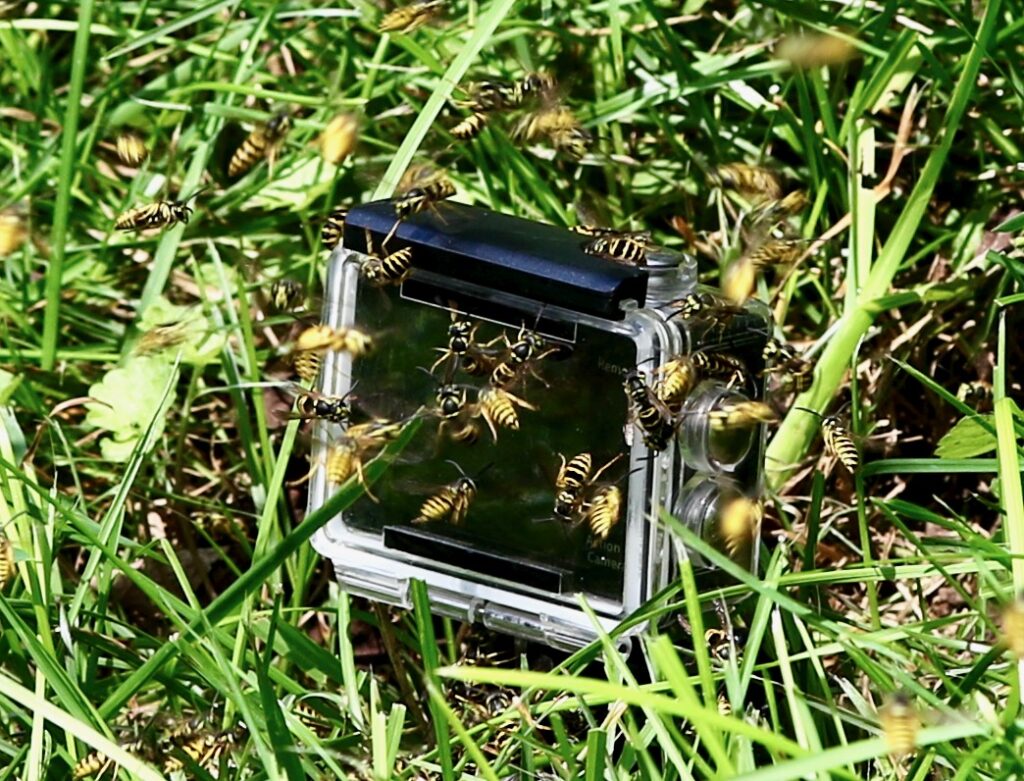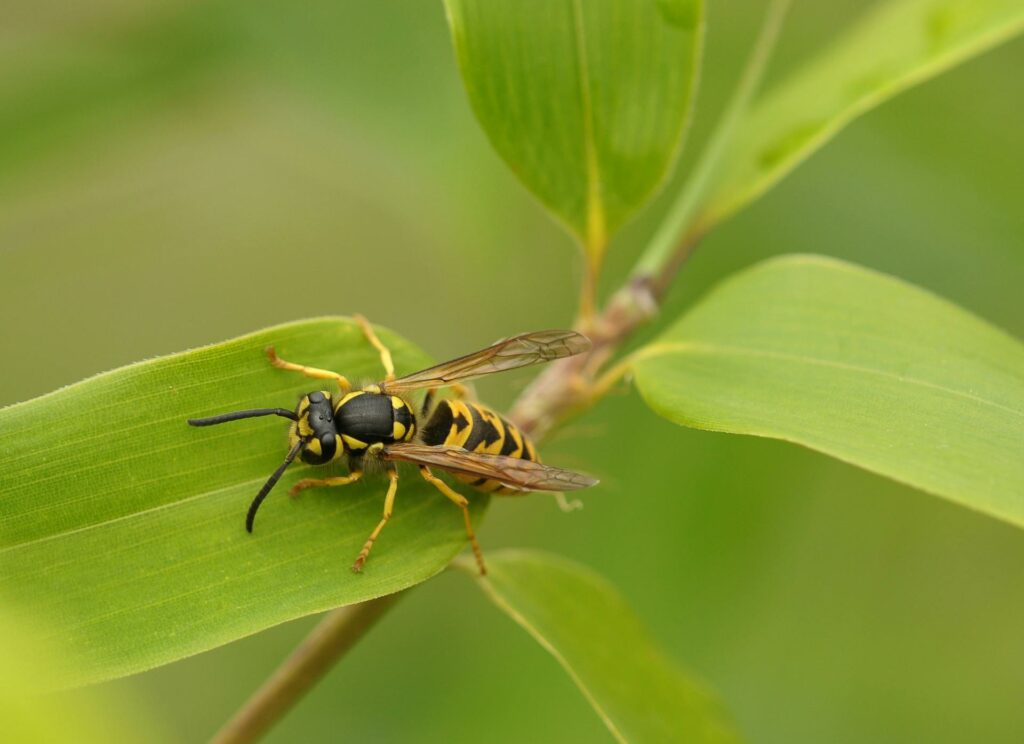We are experiencing a heightened number of ground nesting yellowjackets along the trails on Lancaster Conservancy nature preserves. Please hike with caution and respect.

Yellowjackets swarm a GoPro camera (Photo by Keith Williams)
Yellowjackets are typically ground nesters that prefer cooler, damp conditions, so you may spot them along trails (particularly in the duff on edges of trails, within rocks and logs). Hikers may also encounter paper wasps, which are typically found in pavilions, port-a-johns, and tree tubes. Conservancy staff has observed an uptick in yellowjacket nests along trails this season. Keith Williams, Vice President of Engagement and Education at Lancaster Conservancy, hypothesizes that a late-summer cold spell with nights dropping to 50 degrees may be related to the proliferation of yellowjackets this year.
Lancaster Conservancy maintains our trails to minimize hazards; however, our preserves are for use at your own risk. To make your outdoor explorations as safe and responsible as possible – during any time of year – please consider the following precautions whenever you head outside:
- Plan ahead. Study trail maps and informational resources (like the Conservancy’s preserve pages) so you know where you’re going and how challenging a hike can be. Are you comfortable with the hike’s level of difficulty? Are you wearing safe shoes? Are you prepared for the day’s weather?
- Don’t hike alone. It’s always safest to have a buddy when exploring outdoors. If you are going out alone, let someone else know where you’re hiking and when they should expect you back, and be realistic about your preparedness, experience, and ability level in relation to your planned route.
- Carry a first aid kit including liquid Benadryl for reactions to stings and any prescribed medications such as an epi pen. Also make sure to bring plenty of water and snacks!
- There’s nothing wrong with turning around. If something doesn’t feel doable or safe, remove yourself from the situation. Does that climb look steeper in person than it did on the map? It’s better to pick a different hike and stay safe! Are you seeing warnings about ground nesting wasps and don’t want to risk a sting? No judgement for finding a trail that feels more comfortable! Although the Conservancy manages our preserves to reduce exposure to risk, we cannot eradicate all risks on natural lands.
- Stay on trails. Lancaster Conservancy maintains official, blazed trails to mitigate risks for public visitation to preserves; we do not maintain social trails, deer trails, creek stomps, etc. Stay on the designated trail to mitigate your own exposure to risk and to help protect our wildlife.
- Dogs must be on leash. Your dog must be on a leash at all times. Dogs off leash can cause increased exposure to risk for themselves, to you, or to others by disturbing wildlife including ground nests.
- Follow all “closed” signs. If a trail or preserve is marked as closed, please do not enter that area. By ignoring “closed” signage, you may inadvertently put yourself or others, including Conservancy staff or first responders, at risk. Additionally, you may disturb ongoing restoration projects that are in progress to support healthier ecosystems on our preserves.
- Let us know about incidents or hazards. Please report any incidents or potential hazards, such as yellowjacket nests, to the Conservancy so that we can address them. Call us at 717-392-7891 or email conserve@lancasterconservancy.org. We appreciate your help looking out for our nature preserves and visitors!
- If you find yourself in an emergency situation, call 911 and provide pertinent details including the type and severity of ailment, location (be specific: preserve name, trail blaze color, how far you’ve hiked, etc.), and any known hazards.

Yellowjacket (Photo courtesy of Pixabay)
As the weather shifts from summer to fall, yellowjackets become extra aggressive as they search for food to feed their colonies. They’re competing for resources and protecting their nests, and if you get too close, they may think you’re a threat.
Don’t be confused by their bee-like yellow and black coloring – yellowjackets are actually wasps. Like bees, yellowjackets swarm to attack; but unlike bees, each yellowjacket will sting repeatedly. These wasps communicate and mark targets with pheromones and can track a target for long distances, and they are silent.
Yellowjacket queens are the only members of their colonies to survive the winter. In the spring, the queens wake up and start new nests, which may be in a ground cavity like an abandoned mouse nest, or in some other existing cavity like a hollow tree or attic. As their eggs hatch, their colonies grow, and one colony may include several hundred worker wasps by late summer. And then, hikers beware!
If you’re hiking during yellowjacket season, don’t bang your hiking poles on the ground, and walk swiftly and quietly to avoid disturbing nests.
Emergency responses are costly and hazardous. Help the Conservancy support first responders by following the above steps to minimize your exposure to risks.
Learn more about hiking safely and responsibly by following Leave No Trace principles here. See the full list of Lancaster Conservancy nature preserve rules and regulations here.
